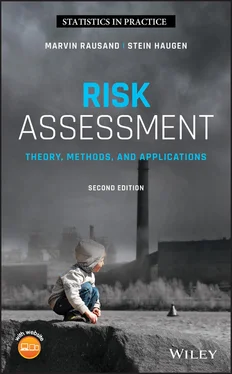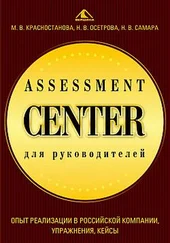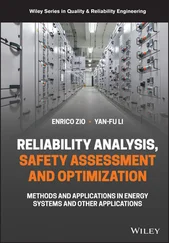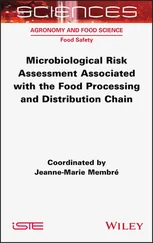An accident may be defined as:
Definition 2.17 (Accident)
A sudden, unwanted, and unplanned event or event sequence that has led to harm to people, the environment, or other tangible assets.
By this definition, we have moved from talking about the future to considering the past. An accident is an event that actually has caused harm to one or more assets. The definition further implies that an accident is not predictable with respect to whether and when it occurs. The definition emphasizes that an accident is a distinct event or event sequence and not a long‐term exposure to some hazardous material or energy. Suchman (1961) argues that an event can be classified as an accident only if it is unexpected, unavoidable, and unintended.
Accidents can be classified in many different ways, such as according to types of accidents, causes of accidents, and severity of accidents. Some terms that are used to describe accidents are, for example, major accident, process safety accident, personal accident, occupational accident, and disaster. In many cases, the accident types are not clearly defined or the definitions may vary from case to case.
In the process industry, it is common to distinguish between process safety accidents and personal accidents . Process safety accidents are related to the process plant as such, the processes going on and the materials being used in the plant. Common causes of these accidents are that the process comes out of control or that hazardous substances are released. The potential consequences can be very large, both for people, the environment, and other assets. Personal accidents or occupational accidents, usually involve one or few people. Typical examples are falls, cuts, crushing, and contact with electricity. In this case, the categorization is done mainly with respect to the types of accidents (and thereby also causes). In practice, the categorization is also according to the degree of possible consequences that may occur.
Of particular concern are accidents with very large consequences. These accidents – called major accidents – receive a lot of attention, with thorough investigation of causes and sometimes with wide impact on regulations, technology, operations, and public perception of risk. As mentioned previously, process safety accidents is the equivalent term being used in the process industry. There is no generally accepted definition of what this is, but sometimes the term high‐impact, low‐probability event neatly summarizes the main features: they are events of low probability that have a high impact both directly (in terms of direct consequence) and indirectly (e.g. in terms of regulatory and political implications).
Accidents and accident models are discussed in more detail in Chapter 8.
Example 2.8 (Helicopter accidents)
In the SINTEF helicopter studies (Herrera et al. 2010), helicopter accidents are classified into eight categories:
1 (1)Accident during takeoff or landing on a heliport
2 (2)Accident during takeoff or landing on a helideck (i.e. on an offshore platform)
3 (3)Accident caused by critical aircraft failure during flight
4 (4)Midair collision with another aircraft
5 (5)Collision with terrain, sea, or a building structure
6 (6)Personnel accident inside a helicopter (i.e. caused by toxic gases due to fire or cargo)
7 (7)Personnel accident outside a helicopter (i.e. hit by tail rotor)
8 (8)Other accidents.
The studies are limited to accidents involving helicopter crew and passengers. Accidents involving other persons and other assets are not included.
The term “incident” may be defined as:
Definition 2.18 (Incident)
A sudden, unwanted, and unplanned event or event sequence that could reasonably have been expected to result in harm to one or more assets, but actually did not.
This definition is identical to the definition of accident, with the important distinction that incidents do not cause any significant harm. As for accident, the term incident is mainly used about events that have occurred in the past. From an initiating event, the event sequence can develop until it ends either with an accident or with an incident. Other terms that are used more or less with the same meaning as incident are near accident , mishap , and near miss .
Observe that some authors use the term incident to include both incidents and accidents as they are defined in this book.
Phimister et al. (2004) define precursors as:
Definition 2.19 (Precursors)
Conditions, events, and sequences that precede and lead up to accidents.
A precursor is therefore something that happens that may alert us that an accident is imminent. If precursors can be identified, this offers a great potential for avoiding accidents. Many organizations have developed systems to identify accident precursors and made procedures on how to intervene before any accident occurs.
It is sometimes easy to spot precursors after an accident has occurred. More difficult is to identify precursors upfront an accident. Precursors are often technical failures, human errors, or operating conditions that individually or in combination with other precursors, may lead to an accident. Often, precursors can be identified when they lead to incidents and near accidents that were stopped by functioning safety controls. An incident (with no significant consequences) is not a precursor, but may help to reveal precursors (e.g. see U.S. DOE 1996).
2.3.13 Special Types of Accidents
Accident causation and accident models are discussed in more detail in Chapter 8. The development of accident theory has been strongly influenced by the views of Charles Perrow and James Reason, who have introduced new notions for major accidents.
Reason (1997) introduces the concept of organizational accident, defined as follows:
Definition 2.20 (Organizational accident)
A comparatively rare, but often catastrophic, event that occurs within complex modern technologies (e.g. nuclear power plants, commercial aviation, the petrochemical industry, chemical process plants, marine and rail transport, banks, and stadiums) and has multiple causes involving many people operating at different levels of their respective companies. Organizational accidents often have devastating effects on uninvolved populations, assets, and the environment.
Reason (1997) calls accidents that cannot be classified as organizational accidents, individual accidents:
Definition 2.21 (Individual accident)
An accident in which a specific person or group is often both the agent and the victim of the accident. The consequences to the people concerned may be great, but their spread is limited.
In the book “Normal Accidents: Living with High‐Risk Technologies,” Perrow (1984) introduces the concepts of system accident and normal accident . Normal accident theory is discussed in Chapter 8, so here we just define his concept of system accident:
Definition 2.22 (System accident)
An accident that arises in the interactions among components (electromechanical, digital, and human) rather than in the failure of individual components (Perrow 1984).
In analogy with the terminology of Reason (1997), an accident that cannot be classified as a system accident is sometimes called a component failure accident:
Definition 2.23 (Component failure accident)
Читать дальше












